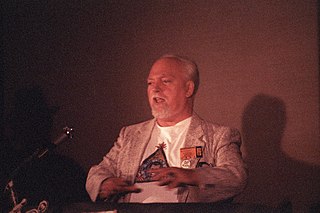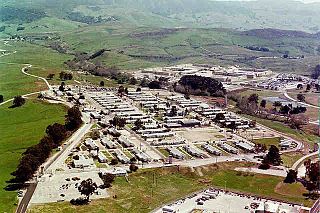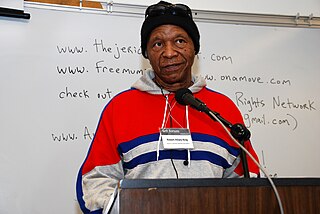
Robert Anton Wilson was an American author, futurist, psychologist, and self-described agnostic mystic. Recognized within Discordianism as an Episkopos, pope and saint, Wilson helped publicize Discordianism through his writings and interviews. In 1999 he described his work as an "attempt to break down conditioned associations, to look at the world in a new way, with many models recognized as models or maps, and no one model elevated to the truth". Wilson's goal was "to try to get people into a state of generalized agnosticism, not agnosticism about God alone but agnosticism about everything."

Timothy Francis Leary was an American psychologist and author known for his strong advocacy of psychedelic drugs. Evaluations of Leary are polarized, ranging from bold oracle to publicity hound. According to poet Allen Ginsberg, he was "a hero of American consciousness", and writer Tom Robbins called him a "brave neuronaut". During the 1960s and 1970s, Leary was arrested 36 times; President Richard Nixon allegedly described him as "the most dangerous man in America".

Robert Franklin Stroud, known as the "Birdman of Alcatraz", was a convicted murderer, American federal prisoner and author who has been cited as one of the most notorious criminals in the United States. During his time at Leavenworth Penitentiary, he reared and sold birds and became a respected ornithologist. From 1942 to 1959, he was incarcerated at Alcatraz, where regulations did not allow him to keep birds. Stroud was never released from the federal prison system; he was imprisoned from 1909 to his death in 1963.

Solitary confinement is a form of imprisonment in which an inmate lives in a single cell with little or no contact with other people. It is a punitive tool used within the prison system to discipline or separate inmates who are considered to be security risks to other inmates or prison staff, as well as those who violate facility rules or are deemed disruptive. However, it is also used as protective custody on inmates whose safety is threatened by other inmates in order to separate them from the general prison population.

George Lester Jackson was an American author, activist and convicted felon. While serving an indeterminate sentence for stealing $70 from a gas station in 1961, Jackson became involved in revolutionary activity and co-founded the prison gang Black Guerrilla Family.
The eight-circuit model of consciousness is a holistic model originally presented as psychological philosophy by Timothy Leary in books including Neurologic (1973) and Exo-Psychology (1977), later expanded on by Robert Anton Wilson in his books Cosmic Trigger (1977) and Prometheus Rising (1983), and by Antero Alli in his books Angel Tech (1985) and The Eight-Circuit Brain (2009), that suggests "eight periods [circuits]" within the model. This model has been described as a potential route towards reconciling different interpretations of what it means to be a human being. The eight circuits, or eight systems or "brains", as referred by other authors, operate within the human nervous system. Each corresponds to its own imprint and subjective experience of reality. Leary and Alli include three stages for each circuit, detailing developmental points for each level of consciousness.
Henri Charrière was a French writer, convicted in 1931 as a murderer by the French courts and pardoned in 1970. He wrote the novel Papillon, a memoir of his incarceration in and escape from a penal colony in French Guiana. While Charrière claimed that Papillon was largely true, modern researchers believe that much of the book’s material came from other inmates, rather than Charrière himself. Charrière denied committing the murder, although he freely admitted to having committed various other petty crimes prior to his incarceration.

California Men's Colony (CMC) is a male-only state prison located northwest of the city of San Luis Obispo, San Luis Obispo County, California, along the central California coast approximately halfway between Los Angeles and San Francisco.

California Medical Facility (CMF) is a male-only state prison medical facility located in the city of Vacaville, Solano County, California. It is older than California State Prison, Solano, the other state prison in Vacaville.

Flashbacks: A Personal and Cultural History of an Era is Timothy Leary's autobiography, published in 1983. It was reprinted in 1990 and 1997. The new edition has a foreword by William S. Burroughs, and a new afterword by Leary.

The Angola Three are three African-American former prison inmates who were held for decades in solitary confinement while imprisoned at Louisiana State Penitentiary. The latter two were indicted in April 1972 for the killing of a prison corrections officer; they were convicted in January 1974. Wallace and Woodfox served more than 40 years each in solitary, the "longest period of solitary confinement in American prison history".

Nightrise is the third book in The Power of Five series, written by Anthony Horowitz. It was published and released in the UK on 2 April 2007 by Walker Books Ltd. It is preceded by Evil Star, released in 2006, and followed by Necropolis, which was released on 30 October 2008. The title is a reference to both the fictional organisation represented in the book, and the Old Ones' eclipsing presence on Earth.

Henri Theodore Young was an American convicted bank robber and murderer who, while serving one of a series of prison terms, attempted a 1939 escape from Alcatraz Federal Penitentiary with four other inmates. Arthur "Doc" Barker, Dale Stamphill, Rufus McCain and William "Ty" Martin. During the escape attempt two inmates were shot, Stamphill and Barker. Barker died of his wounds. All survivors were quickly recaptured. Two of the men, Young and Rufus McCain, were sentenced to solitary confinement and served the terms at Alcatraz for a period of three years. Eleven days after re-entering the Alcatraz general prison population in 1942, Young murdered fellow escapee McCain.
André Maturette was a prisoner in the French Guiana prison colony of Devil's Island who attempted to escape with Henri Charrière and Joanes Clousiot.

The Psychedelic Experience: A Manual Based on The Tibetan Book of the Dead is a 1964 book about using psychedelic drugs that was coauthored by Timothy Leary, Ralph Metzner and Richard Alpert. All three authors had taken part in research investigating the therapeutic potential of psychedelic drugs such as LSD, psilocybin and mescaline in addition to the ability of these substances to sometimes induce religious and mystical states of consciousness.

The Zihuatanejo Project was a psychedelic training center and intentional community created during the beginning of the counterculture of the 1960s by Timothy Leary and Richard Alpert under the umbrella of their nonprofit group, the International Federation for Internal Freedom (IFIF). The community was located in Zihuatanejo, Guerrero, Mexico, and took up residence at the Hotel Catalina in the summers of 1962 and 1963.
The following is a list of works by Timothy Leary. The majority of Leary's works were put into the public domain by his estate in 2009.

Robert Hillary King, also known as Robert King Wilkerson, is an American known as one of the Angola Three, former prisoners who were held at Louisiana State Penitentiary in solitary confinement for decades after being convicted in 1973 of prison murders.
Brian Sydney Barritt (1934–2011) was an English author, artist, and counterculture figure. He served in the British army, and was a friend and collaborator to such notables as Timothy Leary, William Burroughs, and Alex Trocchi. He was particularly active in the Beatnik, psychedelic, and Krautrock scenes.
Joanna Harcourt-Smith was an author, poet, psychedelic activist and the founder of Future Primitive Podcast.














